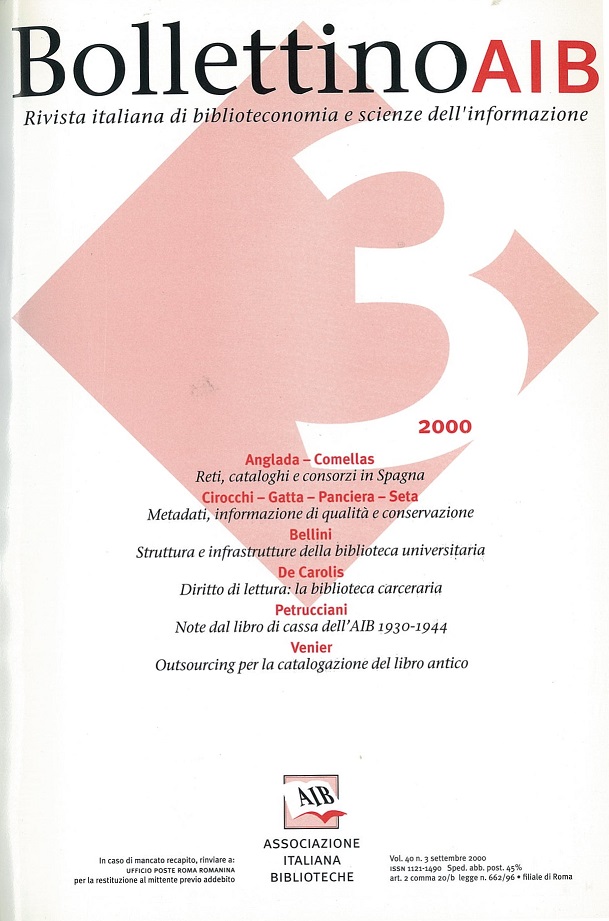Structures and infrastructures of university libraries in the computer era: current trends
Main Article Content
Abstract
The university library of Trent has begun a project for the application of the ISO 11620 standard on library performance indicators. The indicator for measuring "User satisfaction" is based on a questionnaire sent to a representative sample of users. The results that emerged from the questionnaire show that the most criticized aspects of the service are those linked to the scarcity and irrationality of the library spaces and demonstrate that the user, even if accustomed not to complain, is well aware of these deficiencies.
Even if in recent times there has been much discussion about the necessity to create services based on electronic resources, actually the need for real spaces remains urgent, because the lack of spaces proves to be an almost unsurmountable obstacle for the improvement of the quality of a number of services.
The role of libraries is changing and we must ask ourselves how this change is reflected on the need of spaces, from the point of view of quantity and type.
The first change is that the three main areas of a library (spaces for books and other media; spaces for catalogues; spaces for users and staff), traditionally separated, tend today to merge. In the second place, a library is no longer an independent entity existing on its own but one among the many actors in the complex world of information. It follows that the capacity of a library to link up with the outside world assumes greater importance. This capacity depends to a large extent on the quality of the electronic infrastructures and on the organization of a library. The impossibility to foresee what future technological developments will be dictates that a library be flexible, both from an organizational point of view and from that of space. For the moment what is certain is that the need of spaces for computers will continue to increase. New libraries are characterized also by their friendly organizational behaviour with regard to users and close user/staff interaction. Finally an extensive range of new media comes to flank the traditional media, with consequences not only on the processing but also on the storage and preservation of materials.
The model of the library that best suits these characteristics and indeed which has contributed to defining it is that of the "learning centre", widespread especially in the United Kingdom.
The contribution of the commissioners and management of the university in the construction of a new library is defined above all in their analysis of the needs and aims to which the building must respond. With regard to the size of the building also, the involvement of librarians is essential, because the basic parameters that determine the needs of space are the size of the collection and its foreseeable increase over time, the number of users and the different requirements of the various users' groups, the variety of the functional spaces and lastly the connections that must exist between these spaces. A good starting base for this work of collecting information and details on the mission of libraries could be the application of the standards for performance measurement.
Article Details

This work is licensed under a Creative Commons Attribution-ShareAlike 4.0 International License.
